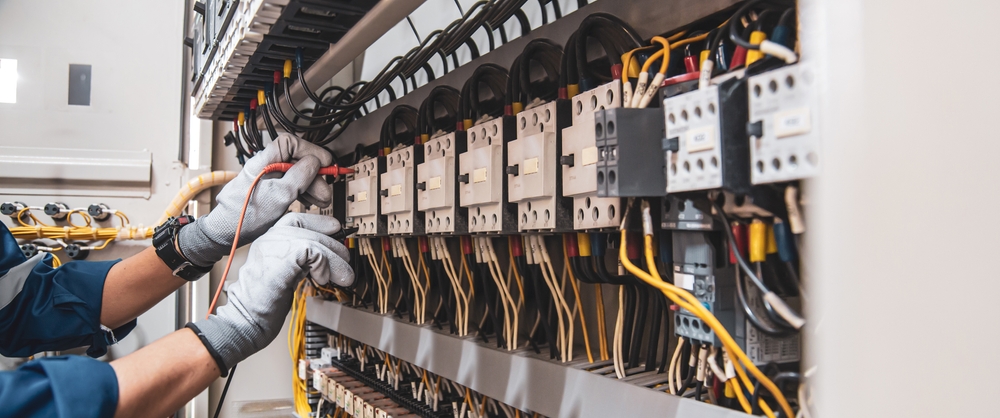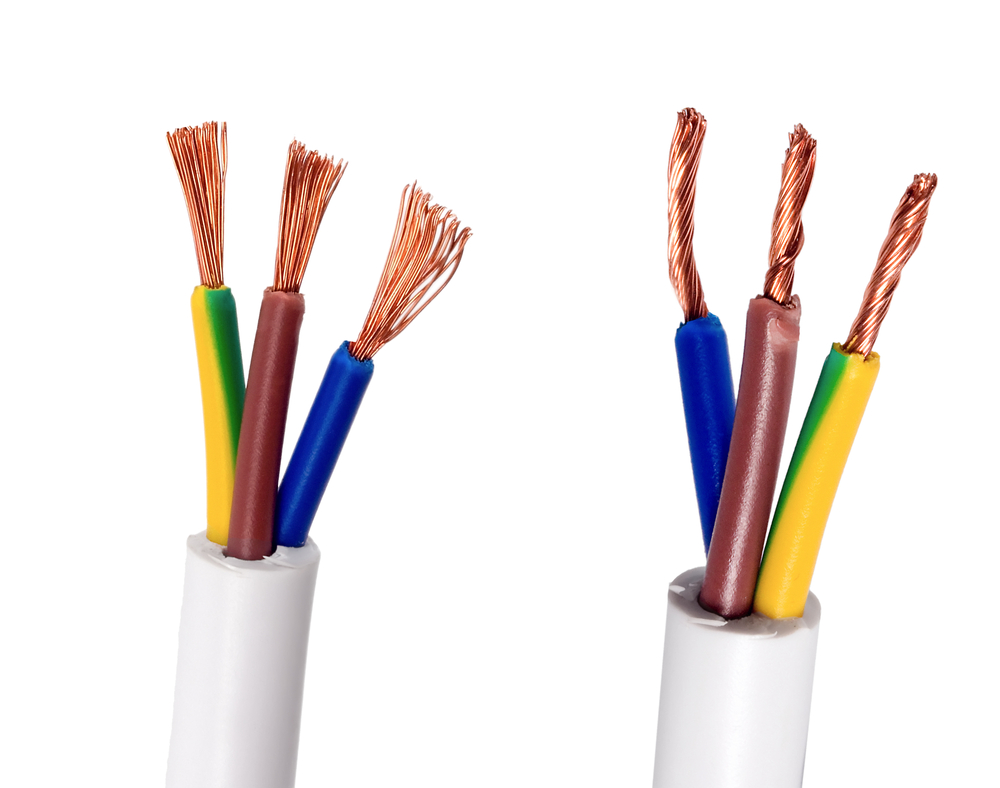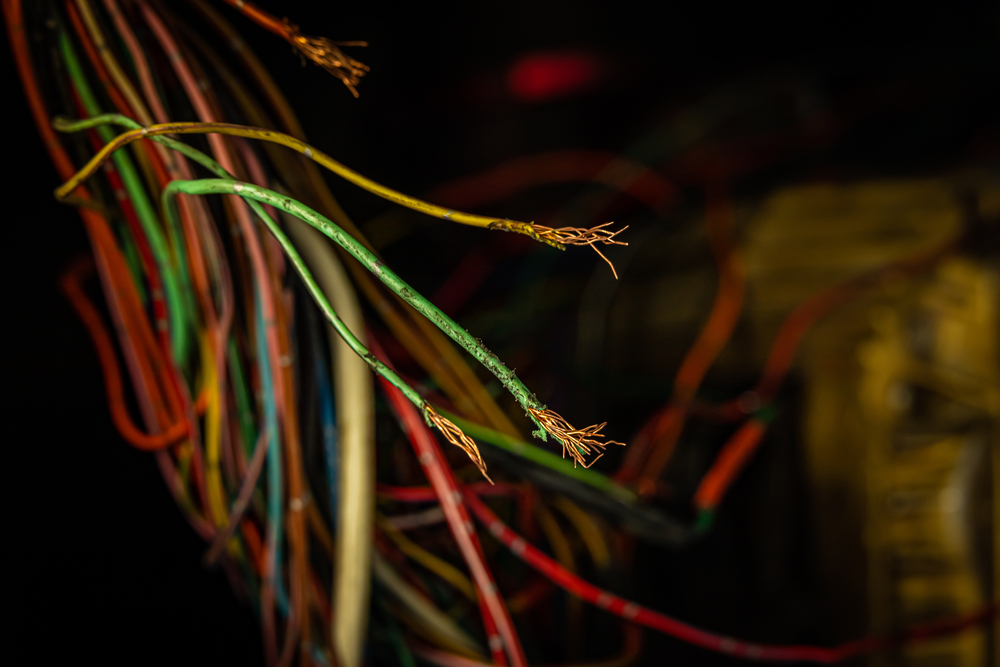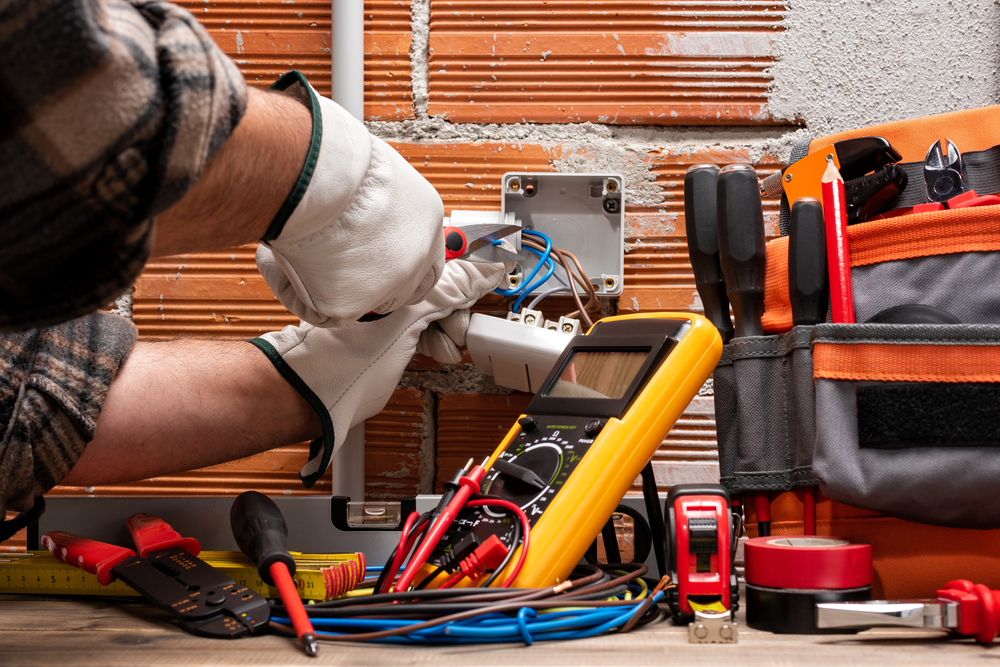
While the rainbow of colours in an electrical box might seem like a confusing mess to the untrained eye, every one has a unique purpose. In Melbourne, electrical wiring colours follow specific standards for safety. Let’s look at the basics of electrical wiring colours in Melbourne and what they mean.
Wiring Colours in Australia
Australia updated their electrical wiring codes in 2018, which included a shift in the colours used for the different wire types. As of 2018, the standard wiring colours are:
Live/Active Wire – Brown
The active wire carries electricity to the appliance from the distribution wires that connect your house to the power source, called the grid. While all wires should be treated carefully, the live wire carries the highest voltage and poses the most risk if touched or mishandled.
Neutral Wire – Blue
The neutral wire carries electricity back from the appliance, preventing it from being overloaded and completing the electrical circuit. This wire carries a lower voltage but is by no means safe.
Ground Wire – Green and Yellow Stripe
The ground wire or earth wire is there to act as a conductor, redirecting the electrical current through a safe path where it can be discharged. If there are any issues with your live or neutral wires, the ground wire prevents electric shocks when any part of the circuit (such as a fridge or light socket) is touched. If the ground wire were damaged or absent, you would act as the ground wire, and could receive a serious jolt.
Having an issue with your wiring? YMT Electrical has licensed and professional electricians in Ascot Vale, Moonee Ponds, Broadmeadows and more, ready to help!

Historical Wire Colours in Melbourne
Prior to 2004, single-phase wiring for electrical systems in Melbourne used very different colours.
Red was used for the active wiring rather than brown. For neutral, black wire was used instead of blue. The ground wire was green, with the green and yellow striping being the newer version.
The reason for the change is Australia choosing to align with European and international standards to improve consistency for internationally manufactured and distributed products.
Understanding Wiring Colours in Three-Phase Systems
There is one common exception to this system: three-phase systems. Most homes will be wired exclusively with single-phase writing, while commercial or industrial properties will most likely have three-phase.
What is Three-Phase Wiring?
Three-phase wiring is different in that it has three active electrical wires, which peak at a short delay from one another. This provides a more consistent and powerful supply of electricity to the appliance or load that is connected.
Why Use Three-Phase Power?
Single-phase is sufficient for most residential applications, such as fridges, lighting, and other appliances. But for commercial or industrial properties, multiple large electrical appliances may be in use, like walk-in fridges, air conditioning for warehouses, or large machinery for manufacturing.
In these high-load applications, three-phase power allows all of these appliances to receive the correct amount of power without causing flickering, brown-outs or loss of function in other appliances on the circuit.
What Are The Colours of Three-Phase Wiring?
The colour coding for three-phase wiring is brown, black, and grey for the three active wires, a blue wire for neutral, and green & yellow for earth. This means that the only difference from single-phase is the two added black and grey active electrical wires.
Hidden Electrical Hazards: Renovation and Wall Demolition
Renovations and wall demolitions can really improve your space and the layout, but there’s always a risk involved. Specifically, you might encounter old, degraded or non-standard coloured wires, which can really throw a wrench into the works. This can be addressed, but it’s important to first understand why it is necessary.
Even skilled electricians can find wiring that doesn’t follow modern colour standards frustrating. Misinterpretation of these colours can result in incorrect connections, posing serious hazards such as electrical fires, shock risks, and damage to appliances.
Thankfully, this is relatively easy to address with the right tools and training. Electricians carry specialised devices called wire tracers, which allow them to measure the voltage of each wire, which can then be marked for future reference.
If you’ve started your demolition and encountered electrical wires, you’ll need to contact a professional electrician. Call YMT Electrical’s skilled and friendly electricians in Bundoora, Tullamarine or anywhere in Melbourne for help today.
Special Considerations for Melbourne’s Heritage Homes
Melbourne’s heritage homes are a much-loved feature of the city, and there has been renewed interest in keeping their charm rather than demolishing them to rebuild. However, they can also present unique challenges, especially when it comes to their electrical systems.
One key issue is the style of insulation used. Homes built before the 1960s primarily used cotton-wrapped insulation, which is a cotton or rayon layer surrounded by rubber or asbestos paper. This style of insulation poses two main issues: a high risk of fire and asbestos exposure.
As the cotton wrapping degrades over time, it can cause sparking and even lead to fires, the risk of which only increases the older the wiring system gets. The second issue is the use of asbestos as an insulator, which has been linked to serious lung damage and some types of cancer. While this is not as much of a concern when the asbestos is undisturbed, if you are undertaking DIY renovations around cotton-wrapped wiring, you may be inadvertently exposing yourself to the asbestos fibres.
For these reasons, it is essential that you call a licensed electrician to inspect the wiring in your period home, and have the entire electrical system upgraded to a newer and safer style if cotton wrapping is found. We recommend that you make the call before you start any demolition work to reduce the risks of shocks, asbestos exposure and other issues.

Common Myths About Wiring Colours
There are a few common myths we encounter when discussing wire colours with clients. While they aren’t inherently dangerous, misinformation can spread and might cause people to make dangerous choices. Let’s clear up some things:
- Live wires are always red
This is no longer the case! As we discussed, any wiring installed after 2018 now uses brown as the colour code for the active wire. Red was a useful colour for many people, as live wires are also often called ‘hot wires,’ and red is the same colour as fire.
- Ground wires are brown or green
Before 2018, ground wires were typically green, but are now yellow and green striped. They have never been brown, and we believe this misconception comes from the association between brown and dirt, which causes confusion.
- Electricians are not allowed to be colour-blind
This is an interesting one! People assume all colour-blind people see only in shades of grey, which would make it impossible to tell the difference between the colours of the wires.
The truth is that almost all people with colour blindness struggle with distinguishing between red and green (called protanomaly and deuteranomaly.) With the change to the new wire colour coding system, there is no issue with wire colours being confused by people with this condition.
Ultimately, even those with complete colour blindness can use alternative methods to test and identify wires.
- Colour is a reliable way to identify a wire
As you can see from this article, colour coding standards have changed over time, and previous DIY electrical work that was not done to these standards can further complicate things. That is why any work on electrical wiring must be done by a licensed electrician, who has the tools, training and safety equipment to work on wiring.

Quality and Safe Electrical Wiring Work with YMT Electrical
From understanding modern wiring standards to recognising the hazards of outdated systems, we hope you’ve learned some new things, especially about the importance of correct wire identification and professional handling. Whether dealing with three-phase systems, or navigating the unique challenges of heritage homes, staying informed and prioritising safety is crucial.
YMT Electrical can help with all kinds of wiring jobs, including lighting, circuit breaker repairs and upgrades, surge protection installation and more. We also provide inspections and advice on wiring location and quality for those who are starting a renovation of their property. Contact us today on 0413 999 490 for a quote, and get started on your home improvement project with confidence.
-
February Feb 2025Common Electrical Problems in Melbourne Homes (And How to Fix Them)
Unfortunately, electrical problems are an all too common issue for residential and commercial properties across Melbourne. While these can range from inconvenient to hazardous, it’s important to be aware of what they are, why they occur, and how to respond. Throughout this article, we’ll cover 10 of the most common electrical problems in Melbourne, then […]
Read More -
January Jan 2025Tips for Christmas Lights Installation
The holiday season isn’t complete without the warm glow of Christmas lights, whether they’re tree lights in the front garden or patio string lights. However, creating a dazzling display requires a balance of safety and creativity. From choosing the right type of lights to maintaining them after the season is over, this guide will help […]
Read More



